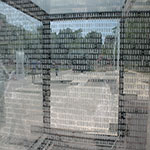Euroacademia Conferences
 Europe Inside-Out: Europe and Europeanness Exposed to Plural Observers (9th Edition) April 24 - 25, 2020
Europe Inside-Out: Europe and Europeanness Exposed to Plural Observers (9th Edition) April 24 - 25, 2020 Identities and Identifications: Politicized Uses of Collective Identities (9th Edition) June 12 - 13, 2020
Identities and Identifications: Politicized Uses of Collective Identities (9th Edition) June 12 - 13, 2020 8th Forum of Critical Studies: Asking Big Questions Again January 24 - 25, 2020
8th Forum of Critical Studies: Asking Big Questions Again January 24 - 25, 2020 Re-Inventing Eastern Europe (7th Edition) December 13 - 14, 2019
Re-Inventing Eastern Europe (7th Edition) December 13 - 14, 2019 The European Union and the Politicization of Europe (8th Edition) October 25 - 26, 2019
The European Union and the Politicization of Europe (8th Edition) October 25 - 26, 2019 Identities and Identifications: Politicized Uses of Collective Identities (8th Edition) June 28 - 29, 2019
Identities and Identifications: Politicized Uses of Collective Identities (8th Edition) June 28 - 29, 2019 The European Union and the Politicization of Europe (7th Edition) January 25 - 26, 2019
The European Union and the Politicization of Europe (7th Edition) January 25 - 26, 2019 7th Forum of Critical Studies: Asking Big Questions Again November 23 - 24, 2018
7th Forum of Critical Studies: Asking Big Questions Again November 23 - 24, 2018 Europe Inside-Out: Europe and Europeanness Exposed to Plural Observers (8th Edition) September 28 - 30, 2018
Europe Inside-Out: Europe and Europeanness Exposed to Plural Observers (8th Edition) September 28 - 30, 2018 Identities and Identifications: Politicized Uses of Collective Identities (7th Edition) June 14 - 15, 2018
Identities and Identifications: Politicized Uses of Collective Identities (7th Edition) June 14 - 15, 2018
Taxonomy of Engagements in Furnishing the City
-
-

-
Presentation speakers
- Thelma Lazo-Flores, Chatham University, Interior Architecture and Landscape Architecture Programs Pittsburgh, Pennsylvania, United States
Abstract:
Most cities identify with the compendium of everyday neighborhood narratives and urban dialogues that can be associated with furnishings in parks, squares and streets. In that same fabric of the built environment are landscape furniture and outdoor artifacts such as lighting and pedestrian objects, significantly shaping the public space into a functional and idyllic community. Each of the major city squares or neighborhood spaces reveal various aesthetic elements and purposeful forms. The quality of a furnished city park or street discloses socioeconomic meanings, political significations and cultural expressions. The analysis and synthesis in this research will follow the interpretive relationship matrix of (1) site-specific typologies (public seating, signage, lighting fixtures, pet-related stops, and waste receptacles etc.); (2) function (placement, accessibility, sustainability, etc.) and (3) lexical patterns of engagement (social use, activity zoning, wellness and comfort, safety, etc.). Several Asian and North American urban communities visited in the last two decades will be used as case studies. The Asian cities will include major parks and neighborhood communities in Japan, Singapore and the Philippines. The cities of Pittsburgh, New York, Chicago, Denver, Indianapolis, Savannah and Toronto will serve as the backdrop for the North American portion. Site-specific furniture illustrates multiple facets of socio-cultural engagement by human society. It is evident that layouts of open spaces contextually reflect urban stories of history, social dynamics, leisure, and consumer culture. Public furniture are planned to portray social proxemics and articulate mutual time frames of approach, pause and departure. Other public fixtures define the function of urban space and express the protracted time of stay in parks and squares, lending a space for physical or mental refuge. Other observations show that an improved quality of green neighborhood landscapes generates better results of collective social ties, lesser patterns of aggression, and lower crime rates. Studies indicate that enhanced design and programming of urban neighborhoods promote the physical, mental, and spiritual well-being of users. Public seating indicates various taxonomies of experience that portray specific needs for wellness, comfort and safety of multiple users.
-
Related Presentations

Teshigahara Hiroshi - Filmmaker of the Japanese Collapsing Identity
- Maxime Boyer-Degoul

















